Introduction
The REI Quarter Dome SL 1 is a single person, side entry, single side vestibule, double wall, mostly mesh inner, semi-freestanding tent. Its trail weight (fly, poles, inner) is only 32.3 oz (916 g) and it costs only $280, about $75 less than the category average.
The video review below provides detailed setup instructions for both inner-first and fly-first pitches. I also discuss how I camp and organize gear in a tent like this and performance in windy and humid conditions. Much of the information in the review is applicable to all tents in this category and not necessarily unique to the Quarter Dome SL 1, so users of similar tents from Big Agnes, MSR, or Nemo may find some value in it as well.

The video description at YouTube provides a timecode index.
Category Overview
This category of tents (single person, side-entry, single side vestibule, double wall, mostly mesh inner, semi-freestanding) has evolved significantly over the past five years.
The tents have become appreciably lighter and roomier, owed primarily to a hub-based pole set that creates a pseudo-geodesic panel framework. The primary US manufacturers include REI, Big Agnes, Nemo, and MSR.
We’ve included a comparison table below (see the Compared To… section) with ten models having a trail weight (fly, inner, and poles) of less than 3 lb. These tents have an average trail weight of 34 oz / 964 g (range is 23 oz / 652 g to 48 oz / 1361 g) and an average cost of $353 (range is $280 to $450).
The REI Quarter Dome SL 1 has a trail weight of 32.3 oz (916 g) and a cost of $280, which makes it the best value of the bunch.
Features
- Double wall, single entrance, side entry.
- Full mesh inner tent with 4 in (10 cm) bathtub floor.
- Trapezoidal floor plan.
- Vertical sidewalls.
- A shock-corded hub-and-pole assembly is color-coded to simplify setup.
- A large door on the rainfly vestibule for ease of entry can be rolled out of the way when unzipped.
- Stake-out vestibule with a large side entrance for easy entry and adds storage space for your gear.
- Roof vent improves airflow and helps control condensation.
- Exterior guyline tie-out loops and rainfly rollback loops provide setup options for different types of weather.
- Four pockets and six hang loops help organize the interior.
- Reflective stake loops and guylines.
- Fly/footprint minimalist pitch option lets you leave the tent at home and use the fly, poles, and footprint (sold separately) as a lightweight shelter, or aids in pitching the outer tent (fly) first and inner tent from inside.
- Includes a stuff sack, stakes, guylines, and tighteners, as well as a pole-repair tube, a pole bag, and a stake bag.
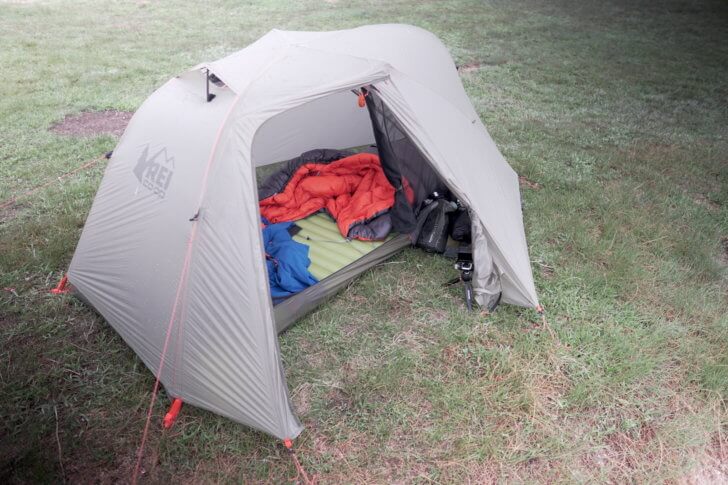
Specifications
- Weight (actual measured values):
- Fly: 11.2 oz (318 g)
- Inner tent: 11.8 oz (335 g)
- Pole set: 9.2 oz (261 g)
- Stakes: 3.9 oz / 111 g (includes ten 6 in (15 cm) v-channel aluminum stakes w/head cords)
- Guylines: 0.7 oz / 20 g (includes three)
- Footprint (optional add-on): 4.1 oz (116 g)
- Packaged Weights:
- Minimalist (fly, poles, footprint, 5 stakes) – 26.5 oz (751 g)
- Fair Weather (fly, poles, inner, 5 stakes) – 34.2 oz (970 g)
- Inclement Weather (fly, poles, inner, footprint, 10 stakes, guylines) – 40.9 oz (1160 g)
- Packed size: 6 x 19 in (15 x 48 cm)
- Floor dimensions: 88 x 35/27 in / 224 x 89/68 cm (L x W head/foot)
- Floor area: 18.9 sq. ft (1.76 sq. m.)
- Vestibule area: 9.6 sq. ft. (0.89 sq. m.)
- Peak height: 38 in (97 cm)
- Pole material: 7000 series DAC aluminum
- Fabrics:
- Fly fabric: ripstop nylon
- Floor fabric: ripstop nylon
- Inner tent: noseeum mesh
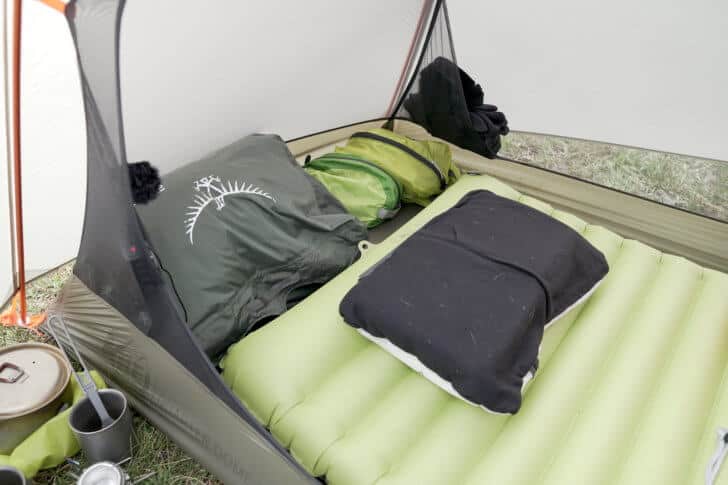
Performance Notes
After using this tent in rainy and humid conditions, I found condensation management to be excellent, attributable to an ideally-located and generously-sized roof vent and steep fly walls.
I also suspected that the fly fabric was made with a low emissivity material, at least when compared to the silnylon and polyurethane (PU) coated nylon fly fabric samples in my possession. Using standardized emissivity measurement methods that use an infrared temperature sensor and an adjustable-emissivity thermal imaging camera, I was able to confirm this suspicion. However, my methods are crude, so I don’t yet have enough confidence in my data to publish comparison numbers.
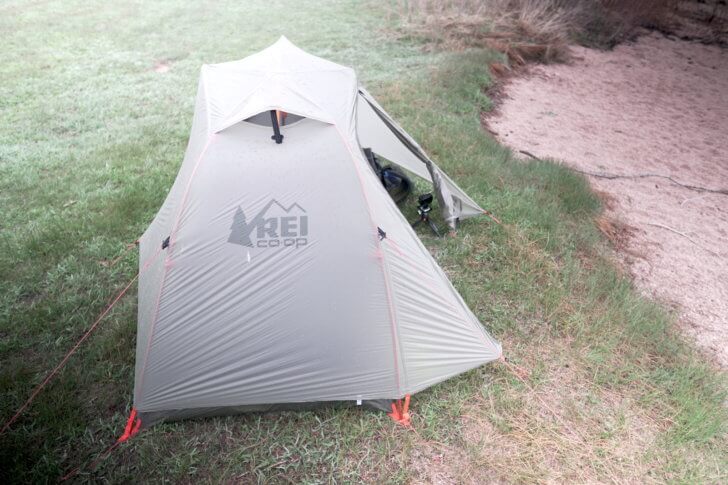
Wind-resistance is very good and the tent stays quiet and stable in winds up to about 30 mph (the maximum I experienced in this tent) – assuming it’s pitched properly and tightly with all of its stakes and guylines.
A vestibule that’s roomier than most single side entry tents, four interior mesh pockets, and six hang loops gives you plenty of options to stay organized.
Strengths
- One of the lightest and most affordable tents available in this category (see Compared To section below) without using expensive, less durable materials (e.g., exotic fabrics, low denier fabrics, or carbon poles). Best value in its category.
- Canopy (fly) pitches very tight, as a result of quality design and manufacturing and enough fabric stretch. This helps with snow shedding, wind stability, and condensation resistance.
- Very quiet and stable in wind, when pitched properly with all stakes and guylines.
- Can be pitched fly-first in inclement weather (optional footprint required, sold separately).
- Generous vestibule space.
- Inner tent floor area is large enough for a wide, long pad with additional room inside for gear storage.
- Vertical sidewalls help minimize getting water inside the tent during entry and exit in rain.
- Fly fabric doesn’t sag in response to increasing humidity/rainy conditions when the tent is properly pitched and tightened initially.
- Good condensation performance.
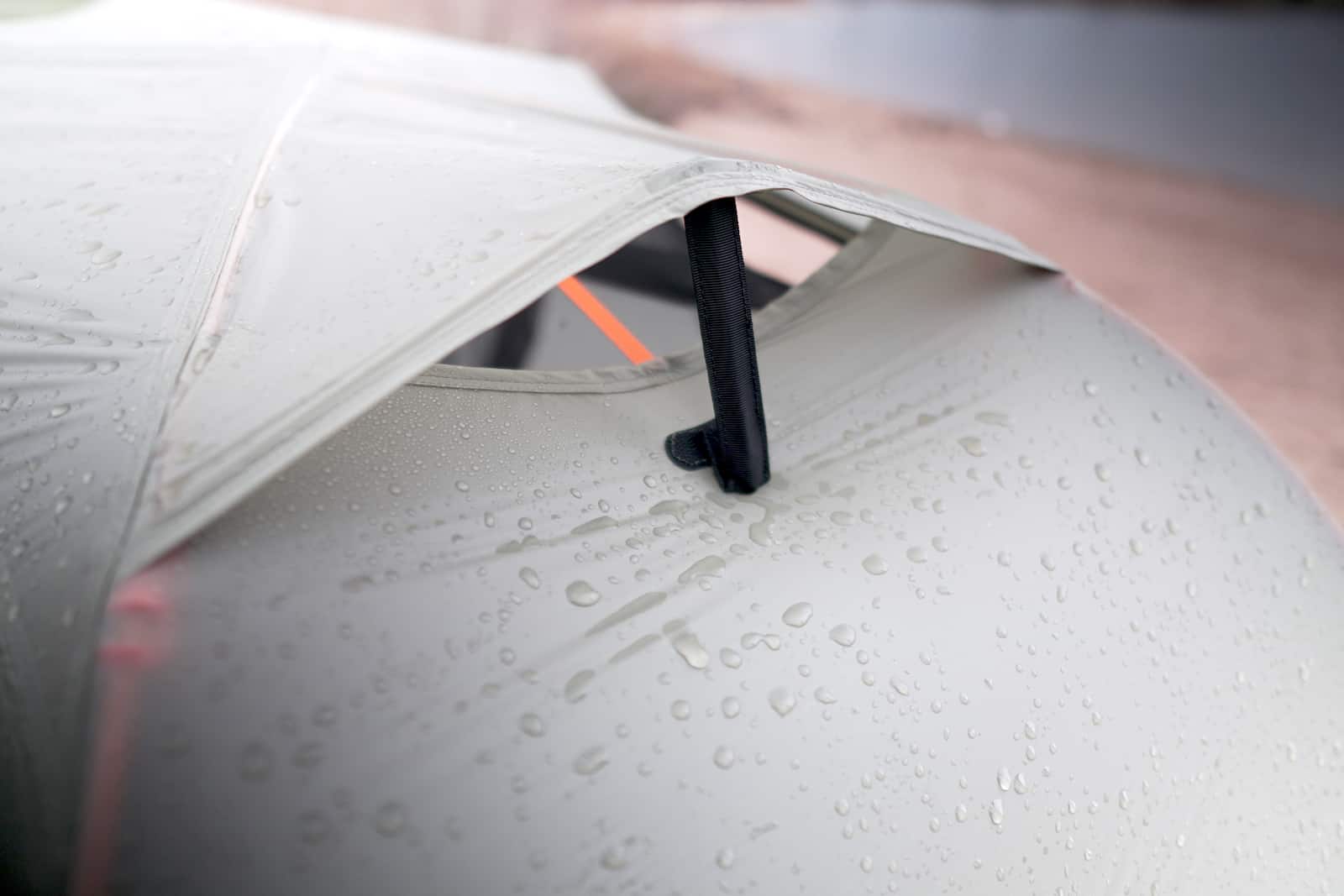
Limitations
- Fly buckles can be difficult to snap in very cold weather (small, hard to use with mittens or gloves).
- Vestibule door zipper guard is very drippy if opened in wet conditions, and some of the water can enter the tent upon entry/exit. A slight awning over the door and as part of the open vestibule would be helpful here.
Compared To…
In the following table, the REI Quarter Dome SL 1 is compared to other similarly-sized double-wall, mostly mesh inner, semi-freestanding (i.e., no trekking pole tents), side entry tents that have a maximum trail weight (fly, inner, poles) of 48 oz (122 g). This table features US tent manufacturers only.
* Note: the Tarptent Rainbow is a hybrid single/double wall tent, but has been included here because of its similarity to other 1-person, side-entry, single-vestibule tents.
| Model | weight (fly, inner, poles, oz) | MSRP (US$) | peak height (in) | floor area (sq. ft.) | type of entry | # vestibules | vestibule area (sq. ft.) | packed size (L x W, in) | pole material |
|---|---|---|---|---|---|---|---|---|---|
| REI Quarter Dome | 32 | $280 | 38 | 18.9 | side | 1 | 9.6 | 6 x 19 | aluminum |
| REI Quarter Dome 1 | 39 | $300 | 42 | 18.9 | side | 1 | 9.8 | 6 x 18.5 | aluminum |
| MSR Freelite 1 | 32 | $390 | 36 | 18.0 | side | 1 | 9.0 | 6 x 18 | aluminum |
| MSR Carbon Reflex 1 | 23 | $450 | 34 | 17.0 | side | 1 | 7.0 | 5 x 17 | carbon |
| MSR Hubba NX 1 | 39 | $380 | 36 | 18.0 | side | 1 | 9.0 | 6 x 18 | aluminum |
| Big Agnes Copper Spur HV UL 1 | 34 | $380 | 38 | 20.2 | side | 1 | 9.0 | 4 x 16.5 | aluminum |
| Big Agnes Manzanares HV SL1 | 48 | $300 | 38 | 20.0 | side | 1 | 9.0 | 6 x 18 | aluminum |
| Nemo Hornet Elite 1 | 24 | $450 | 39 | 21.8 | side | 1 | 6.9 | 4 x 19 | aluminum |
| Nemo Dragonfly 1 | 32 | $350 | 39 | 20.3 | side | 1 | 10.0 | 4 x 19.5 | aluminum |
| Nemo Hornet 1 | 31 | $330 | 39 | 22.3 | side | 1 | 7.3 | 4.5 x 19 | aluminum |
| Tarptent Rainbow 1 | 37 | $269 | 43 | 23.9 | side | 1 | 8.2 | 4 x 18 | aluminum |
If price and weight are plotted against each other and a linear trendline is regressed to the data, we can get a feel for the value provided in this market category:

Points above the line represent a below average value while points below the line represent an above average value. The farther away a point is from the line, the worse (or better). This makes the Big Agnes Manzanares HV UL1 and the MSR Hubba NX 1 the lowest value tents and the REI Quarter Dome SL 1 the highest value tents.
This analysis comes with a few caveats:
- It’s only applicable to the tents in the table above.
- It only considers weight and cost in the value proposition – not other performance metrics.
Review Rating: Recommended

The REI Quarter Dome SL 1 earns a Recommended Rating for its wind stability, condensation resistance, livability, and value.
The only thing separating it from a Highly Recommended rating is that it’s still a half pound heavier than the two lightest tents on the market in this category – the Nemo Hornet Elite 1 and the MSR Carbon Reflex 1. However, at $170 cheaper than either of those options, the REI Quarter Dome SL 1 offers a very compelling option when it comes to its price:weight ratio.
- Our Rating: Recommended (learn more)
- MSRP: $279
- Weight: 32.3 oz (916 g)
- Buy Now: REI
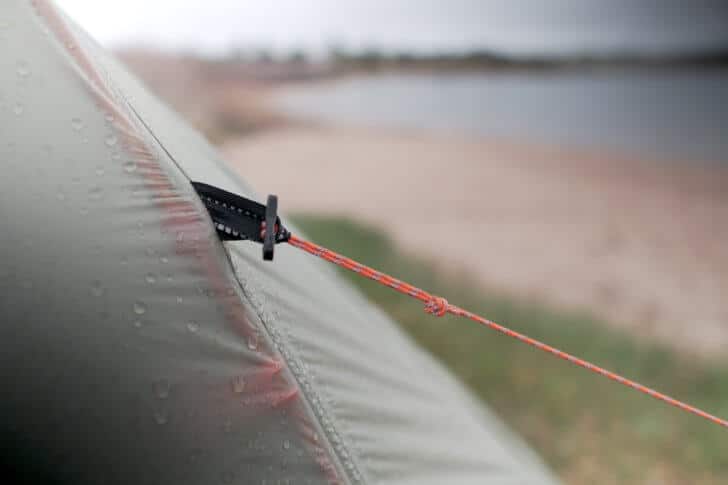
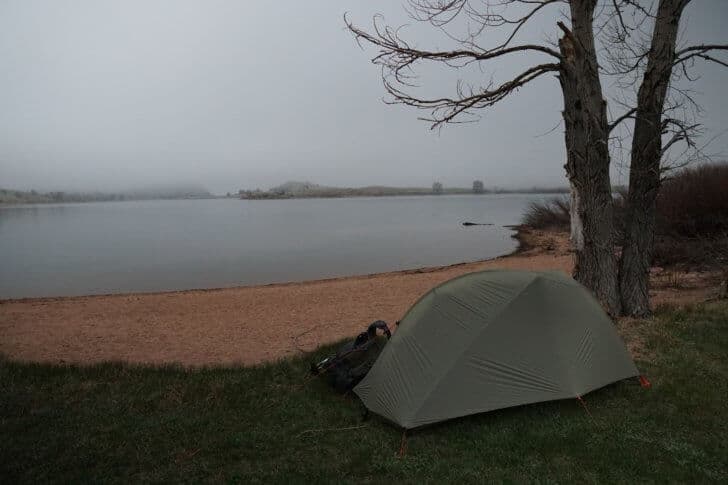
Product Review Disclosure
Updated September 15, 2018
- How we acquired these products: Product(s) discussed in this review were either acquired by the author from a retailer or otherwise provided by the manufacturer at a discount/donation with no obligation to provide media coverage or a product review to the manufacturer(s).
- We do not accept money or in-kind compensation for guaranteed media coverage: Backpacking Light does not accept compensation or donated product in exchange for guaranteed media placement or product review coverage.
- Affiliate links: Some (but not all) of the links in this review may be “affiliate” links, which means if you click on a link to one of our affiliate partners (usually a retailer site), and subsequently make a purchase with that retailer, we receive a small commission. This helps us fund our editorial projects, podcasts, instructional webinars, and more, and we appreciate it a lot! Thank you for supporting Backpacking Light!

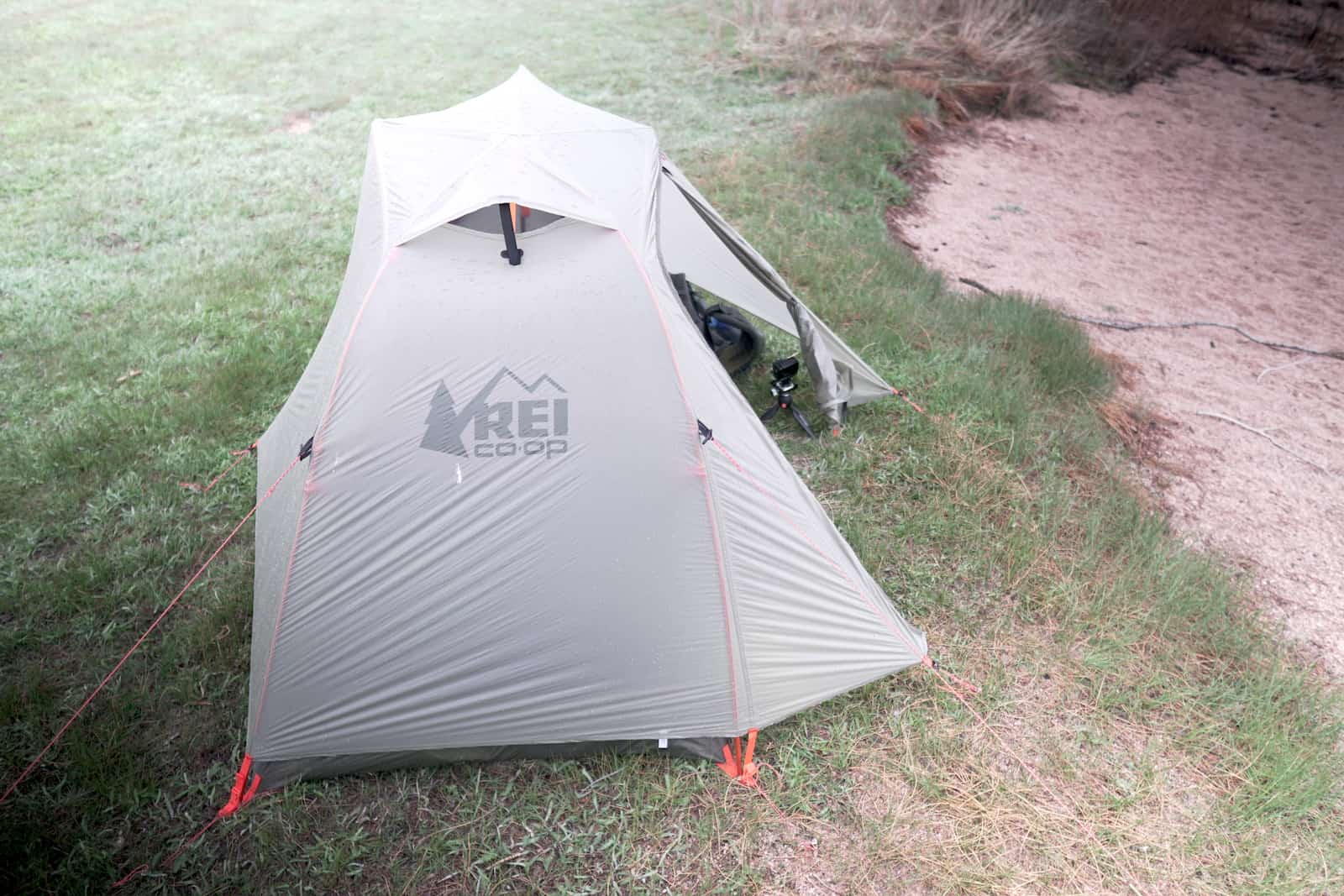


Home › Forums › REI Quarter Dome SL1 Review